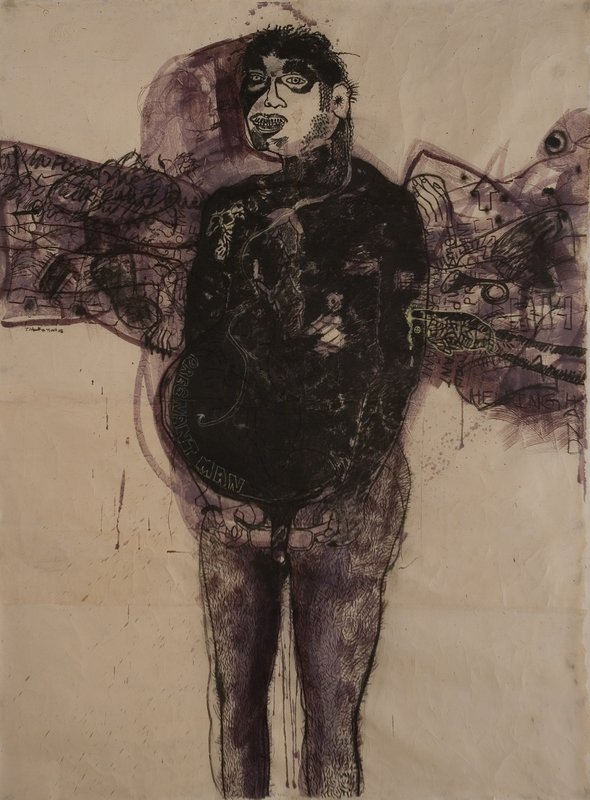For Identity
January 14 to February 22, 2009
Preview: January 14, 2009
Location: Gallery Maskara

A maiden glance at T. Venkanna’s works leaves the viewer perplexed and baffled. Such a feeling arises primarily, owing to the fact that, he effortlessly oscillates between the two dominant pictorial modes, the aggressive and the lyrical, which in art historical/critical language have come to connote masculine and feminine.
By using the aggressive mode, like in the charcoal works, he invokes the claustrophobic together with the erotic. While, in the pen and ink drawings he employs the lyrical mode, which also carries, implications of the sensuous and the sinuous. He completely subverts these categories and compels the viewer to restructure the way they engage with and read his works. By juxtaposing these linguistic modes, he flouts the notion of aesthetic taste and aesthetic pleasure derived from works of art.
By the time, one comes to terms with this aspect of Venkanna’s works; one feels once more ‘deceived’, by the fact that, the artist thwarts any desire on the part of the viewer to understand the works by reducing them to one single meaning. Even though the works, primarily, revolve around the subject of sexual imagination, sexual fantasy and the perpetual, unbounded desire for such pleasure, they also, subtly question the socially constructed notions about masculinity. The artist plods the blurred line between voyeurism and the hidden fantasies of the male. To fully identify with this observation one has to engage with the multiple pictorial tactics he employs in his works.
Venkanna locates the medium of drawing as an appropriate idiom via which he can articulate his artistic concerns. Further, his ‘self’ and ‘body’ serve as the central trope to express this. He neither poses himself as an objective observer nor romanticizes the thematic anxieties. He brings into play de-formed bodies and uses rather insignificant appearing motifs as substitutes of erotic symbols. This assemblage of innumerable images, layered one upon another, implicate the complex nature of his artistic inquiry.
In fact, by means of the labyrinthine character of his pictorial world, he does not accommodate the viewers or grant them an easy condition to consume his works. The camouflaged surfaces map the massive detour of our sexual fantasies and the desire to escape the constraints of a repressive society. For instance, the installation consisting of a small and a big crown has no functional value. Yet it traps the onlooker’s imagination by its sheer scale and materiality. It is here that the relevance of his work is exemplified; an attempt to locate and (re)present sexuality outside the ambit of hegemonic contention, and to problematize the structure of power operating through representation itself.
-Abha Sheth
Jawaharlal Nehru University, New Delhi
